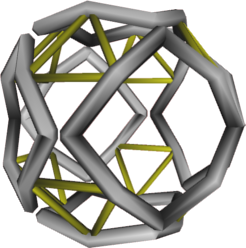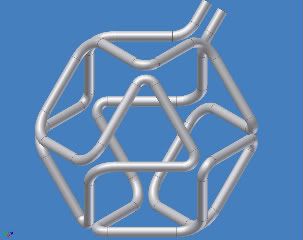Page 1 of 2
Undergrad Research
Posted: Thu Jan 22, 2009 5:58 pm
by Telchar
Hello everybody. I'm a 4th year undergrad physics/math major, been following the polywell for a while now, and reading this forum. I'm doing an independent study this semester, and I'm hoping to do the project on the polywell.
I'm thinking about trying to do a computational simulation, some kind of finite element analysis to see if I can learn anything about the plasma confinement, but I'm frankly a bit ignorant of what would be a useful area of study, and what would be feasible.
If anyone could give me some suggestions on what would be a useful (or at least maybe interesting) research project that I'd have a hope of finishing in a semester with little to no funding it would help a lot. I saw that there has been some work so far on simulations (like the Vlasov solver thread). I'd be happy to devote a semester to polywell research and maybe build on some of the previous work here.
Undergrad Research
Posted: Thu Jan 22, 2009 7:11 pm
by FAMULUS
Hey Telchar. I'm doing research on fabrication technologies and attempting to build a research scale polywell. See
http://prometheusfusionperfection.wordpress.com/
You mentioned finite element analysis, which is something I need help with:
http://prometheusfusionperfection.wordp ... -analysis/
I see the problem as basically finding an opensource tool-chain to go from physical model to finite element analysis of mechanical strength.
It would be great to get help on the computational analysis side of things.
Posted: Thu Jan 22, 2009 9:10 pm
by KitemanSA
How about attempting to calculate the sputtering rate of various materials (diamond, SiC, etc) under a given flux of ~3MeV alpha particles? This may lead to post grad work on experimental confirmation.
Posted: Sun Feb 01, 2009 3:33 pm
by Solo
I'm also an undergrad, wanting to do some polywell-related research. I don't think I have the resources to do an actual experiment at my school, but I think I might end up doing a programming/simulation project.
I have an idea about trying to determine collective effects using a smaller number of particles. What about an interative Monte-Carlo approach? By that I mean: use a particle-in-field simulation with a pre-determined E & B field. Run a bunch of particles through, and come up with an average phase-space distribution at each point. Then use that to modify the existing E & B fields, and run a new batch of particles. Hopefully after doing that for a number of cycles, the thing will converge to a self-consistent phase-space/field configuration. Can anyone give me some feedback on this?
Here's on other thought: I think a model polywell could be built with permanent magnets. Here's the catch: instead of charging the permanent magnet, leave it at ground potential. Then use a toroidal electrode to take the place of the magrid. The magnet would be placed on the axis of the toroid. The magnet would be spaced outside the magrid by some fraction of the toroid's radius (varying that distance would be a good experiment). The E & B fields wouldn't be aligned quite the same way as in a real magrid machine, but the advantage is that permanent magnets can get the kind of field strengths we need, continuously, without expensive power supplies or cooling!
Someone is going to complain about recirculation not being able to go through the permanent magnet. Here's the trick: since the magnet will be at ground potential, there will be a strong electric field between it and the positive toroidal electrode. This field will decellerate the approaching electrons. (Alternatively, since the electrons are to be generated at ground potential, they will not have much energy when returning to a surface at ground potential). The toroidal electrode will still create an electrostatic potential at its center that should plug the ion losses.
Posted: Tue Feb 03, 2009 4:45 am
by hanelyp
Solo wrote:Here's on other thought: I think a model polywell could be built with permanent magnets. Here's the catch: instead of charging the permanent magnet, leave it at ground potential. Then use a toroidal electrode to take the place of the magrid.
Neat idea, magnetic shielding of the grid by an externally generated field. I suspect it won't form a wiffleball very well, but I'm interested to see how well it works out. Certain to perform better than an unshielded fusor.
Posted: Wed Feb 04, 2009 2:34 am
by Solo
Yeah, the trouble is that if the plasma actually shoves the magnetic field lines back at high beta, then they might get displaced so that they impact the toroidal electrodes.
The best part is that since the permanent magnets can be run in steady state

it might be possible to burn out the background neutral gas, if a sufficiently low base pressure were available. Or at least, the pulsed gas supply would not be necessary because the ions could be supplied by ionization of neutrals gradually. Increasing the drive voltage gradually should lead to whiffleball formation by increasing ionization and confining potential and hence plasma density; perhaps a couple Hall probes could confirm the diamagnetic reduction of the B-field, which is the key to WB formation.
It introduces new variables to play with, since the object producing the magnetic field and electric field are different. (The ratio of the radius of the electrode and of the radius of the magnet to the device radius can be different.) (EDIT: another variable is the distance from the center of the toroidal electrode to the magnet, versus the device radius.)
Posted: Thu Feb 05, 2009 5:14 pm
by Telchar
Thanks to everyone for the replies. I'm going to try to talk to my advisor tomorrow and embark on a project in earnest. I like the idea of the alpha bombardment bit since I've done some materials science before. I'm really not sure how feasible it'll be for me to try to model the plasma itself - I'll have to ask the advisor about that one.
Another thought I had was the cat toy-based dynamic field magnetic confinement device mentioned elsewhere on the forum. It could be a good project to calculate out the field from that and see whether it could actually contain a plasma.
I'll let you guys know what project I decide on when I figure it out.
Posted: Sun Feb 15, 2009 5:29 am
by Solo
Ok, now I've gone and done it! I bought a student liscence for OOPIC Pro (a real bargain!) so now I have to learn how to use it. It looks really impressive though. I also need to figure out what would be most helpful to model. It has to be 2-D though. I'm thinking about doing a single point cusp in the cylindrical geometry that the program offers.
Posted: Sun Feb 15, 2009 11:12 pm
by Jeff Peachman
I'm also a senior (in aerospace engineering). I looked into doing some polywell related graduate work. I'm not sure its my thing just yet. I'm into applications more than pure research. But good luck in your work! I'm hoping to get my hands on a fusion propulsion device before I have to retire =)
Posted: Mon Feb 16, 2009 2:38 am
by KitemanSA
Jeff Peachman wrote:I'm also a senior (in aerospace engineering). I looked into doing some polywell related graduate work. I'm not sure its my thing just yet. I'm into applications more than pure research. But good luck in your work! I'm hoping to get my hands on a fusion propulsion device before I have to retire =)
Jeff,
How bout calculating the field for the bowed versions of these to MaGrids.


bigger picture here->
http://i299.photobucket.com/albums/mm31 ... ube1-2.jpg
Thanks to hanelyp and tombo for their renderings!
Posted: Sun Feb 22, 2009 11:05 pm
by Solo
Well, I've gotten the OOPIC code working for me. I just coded up a simple xy slab model of an infinitely long set of 4 line cusps (kind of like a cross-section of a spindle cusp, but more like a toroidal cusp machine ala Tom Dolan).
I'm getting mixed results, it's quite sensitive to the neutral gas concentration and electron beam current. I'm not sure how to set up the neutral gas to represent the machine accurately. I doubt a uniform constant pressure background is accurate.
I've gotten quite a few different modes out of it: I found one that showed a nice potential well, the way I envisioned it. I've also found one that was more like Art's conception of a plasma with no well, and a monotonic decrease in potential out from the center through the cusps. I also had one electron-heavy run that had a plasma at ground potential through its volume, with a large population of electrons sheilding the plasma from the magrid coils' voltage. I haven't followed any of them long enough to see if they converge to a steady state.
It's going to be a little while before I get more time to work on this, my school work is piling up. And BTW, I just learned I've been accepted to the physics REU program at UW, so unless I get a better offer, I will be doing that this summer. So I won't be doing polywell as my senior thesis, although I'm sure I'll keep working on it anyway.
Posted: Mon Feb 23, 2009 12:07 am
by MSimon
I've been accepted to the physics REU program at UW,
Congrats. I miss the smell of ozone and burning plastic. ;-)
And to just be around the work.
Posted: Mon Feb 23, 2009 2:26 pm
by classicpenny
Solo wrote:I just learned I've been accepted to the physics REU program at UW.
Umm.. Washington or Wisconsin?
Posted: Mon Feb 23, 2009 7:07 pm
by JohnSmith
Or Waterloo...

Posted: Mon Feb 23, 2009 11:21 pm
by Solo
Washington!

That's what I get for always being in a hurry. Waterloo, lol.

 bigger picture here->
bigger picture here->